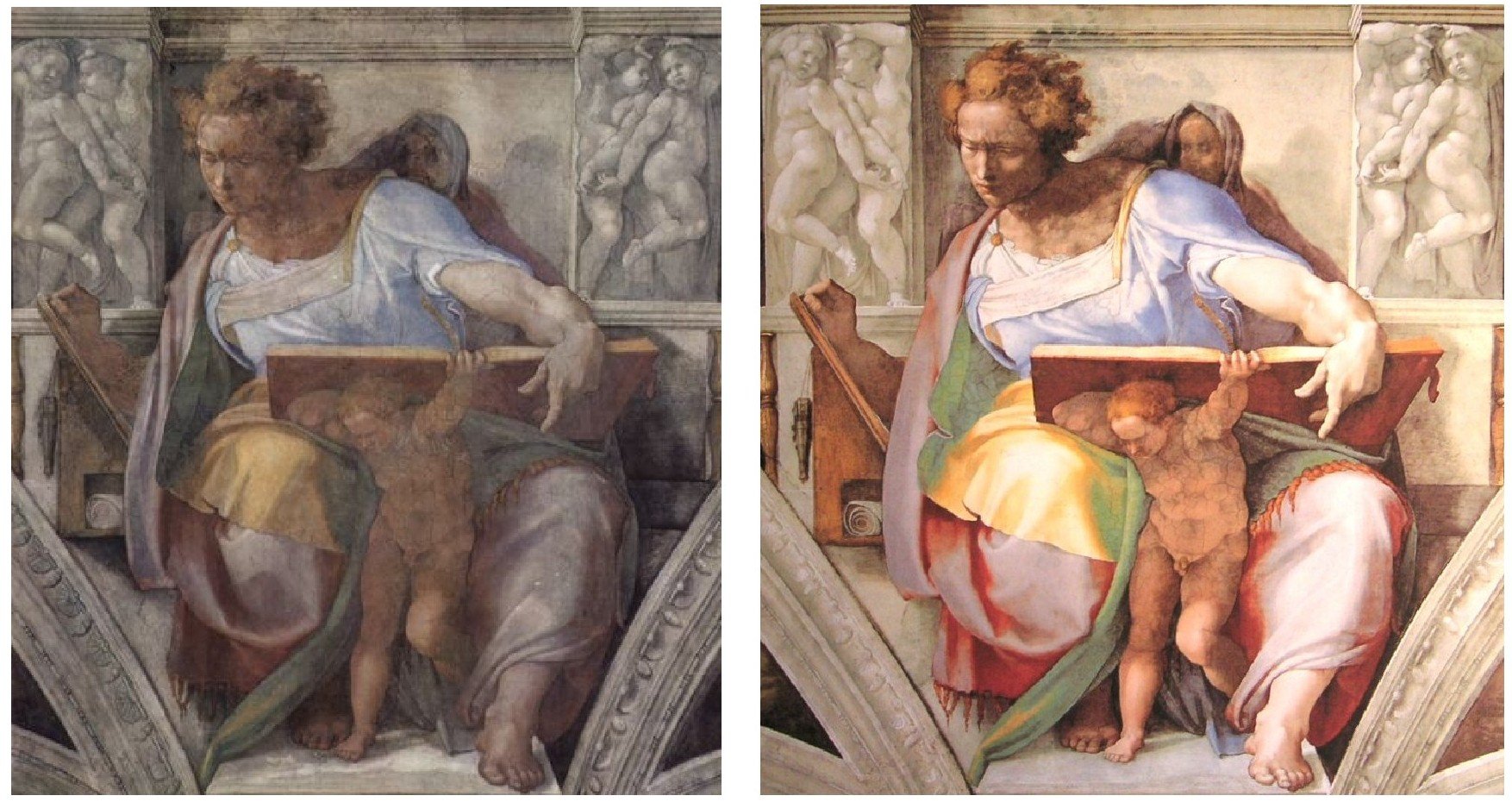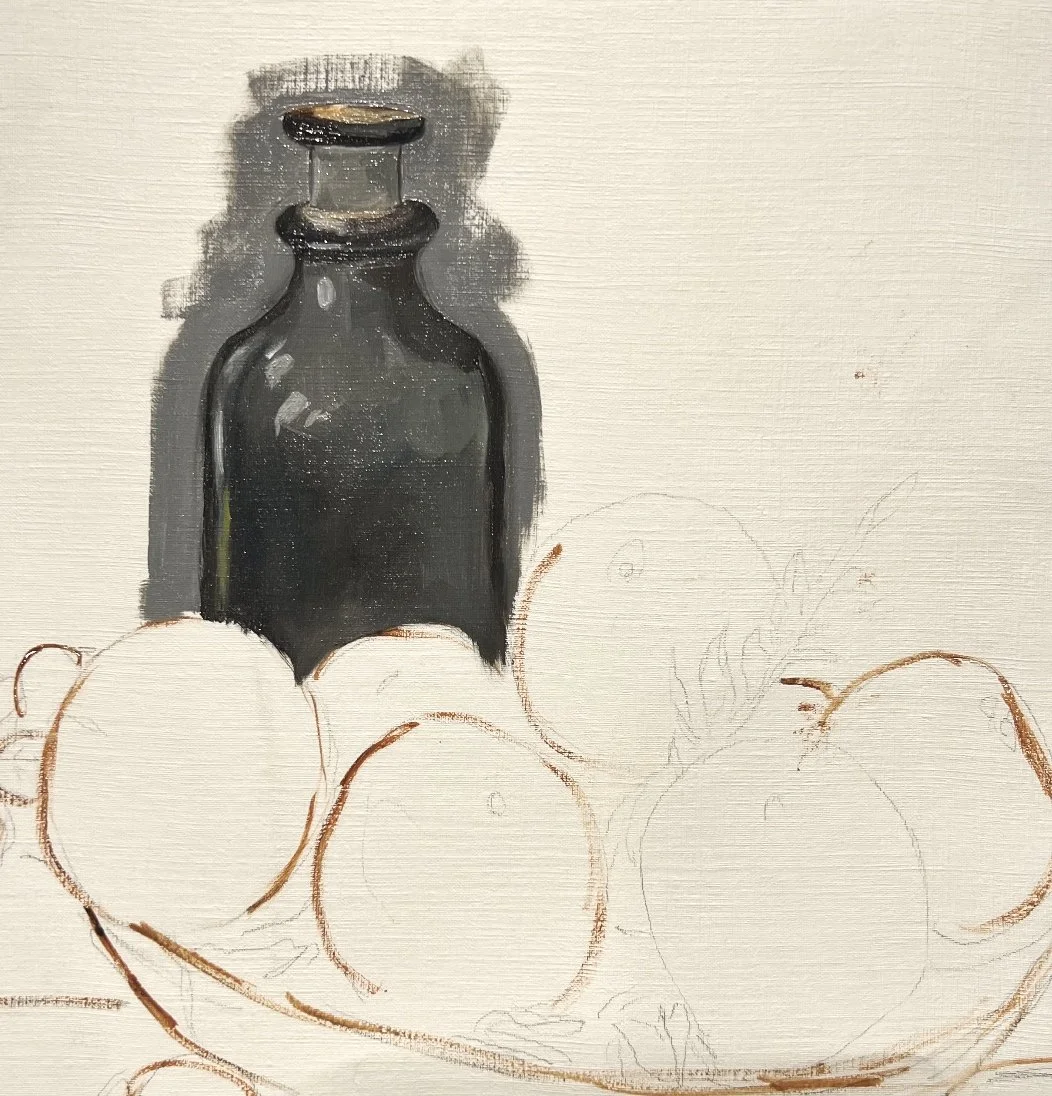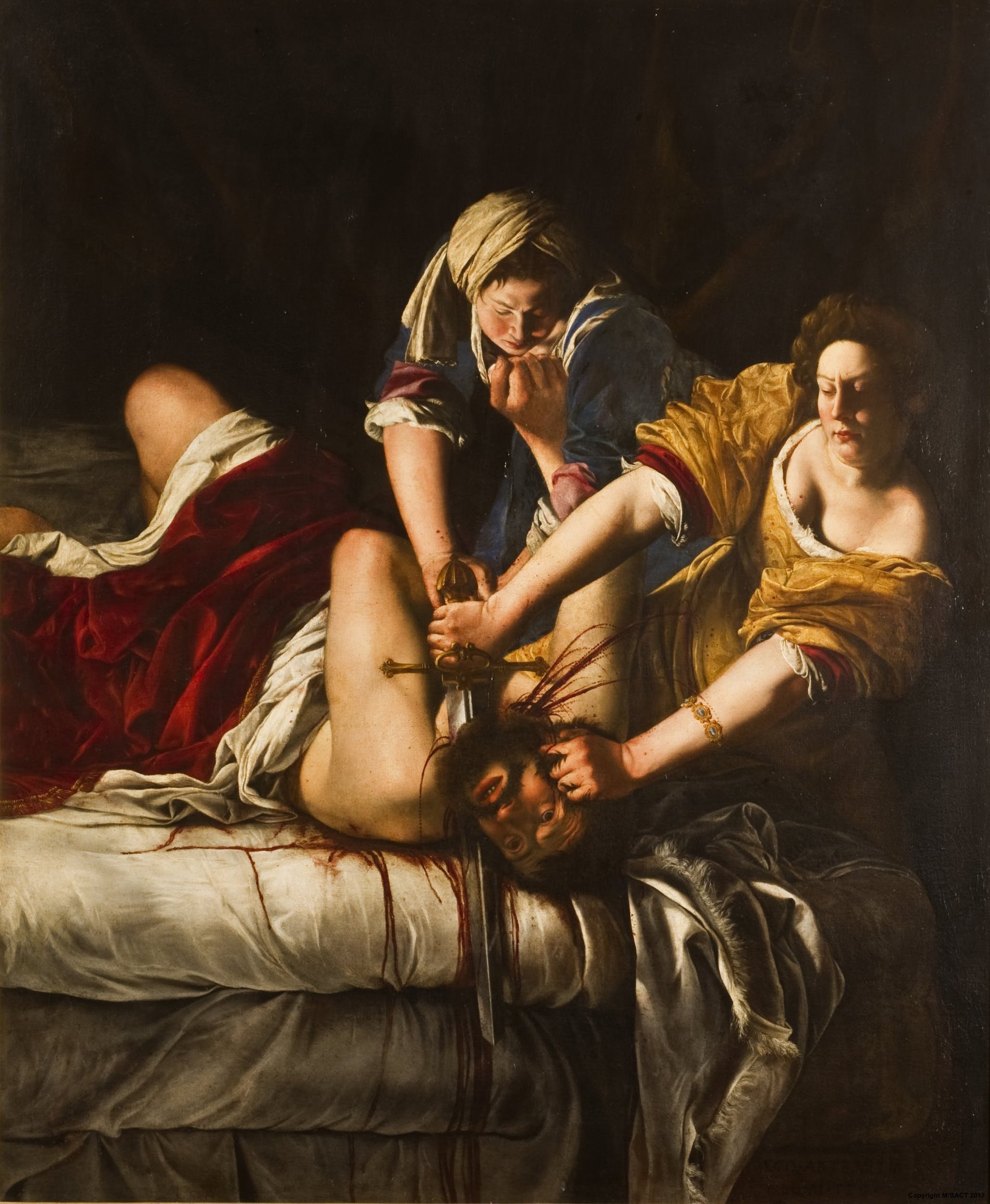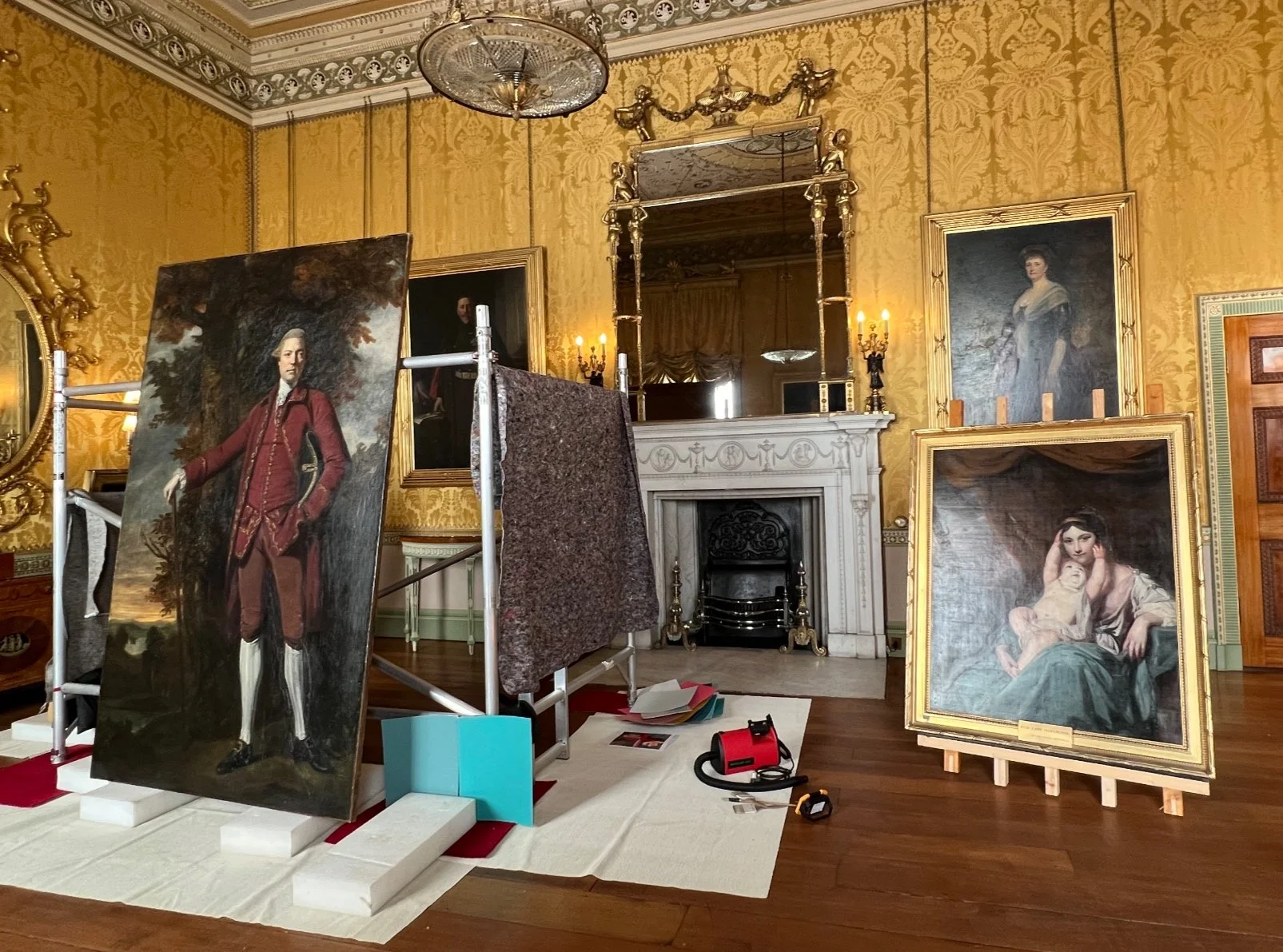Liquin - An Oil Painter’s Best Friend
Oil painters have used mediums for centuries to modify the properties of their oil paints. One of the most popular and versatile mediums used today is liquin, an alkyd-based medium. In this post, we’ll explore the history of liquin, its many uses and advantages for oil painting, any potential disadvantages, and important safety considerations when using this medium.
Tyrian Purple: The Royal Pigment
For over a millennium, tyrian purple stood as the most coveted pigment in the ancient world. Derived from a laborious harvesting process involving thousands of predatory sea snails, the vibrant crimson-purple hue was reserved almost exclusively for denoting imperial sovereignty across the Greek, Roman, and Byzantine empires. Though the specifics of its production may have faded over time, tyrian purple's legacy as a luxury symbol of status persists even today.
The Myth of Originality
What does it mean for art to be truly original? In a hyperconnected world filled with references and reproductions, can any new creation stand alone as purely inventive? While the romantic ideal of the genius artist conjuring novel forms fully formed persists, the realities shaping artistic innovation prove far more complex. Upon analysis, every artwork contains traces of precedent inspiration, whether consciously integrated or subconsciously inherited. Examining the cumulative cultural and perceptual forces underpinning the artistic process reveals creativity's fundamentally collaborative essence. Art does not emerge within a vacuum. By embracing this more nuanced understanding of originality’s mythos, artists and audiences alike can evolve Their approach towards valuation and criticism.
Behind the Painting: La Fiancée Hésitante
Auguste Toulmouche’s “La Fiancée Hésitante”, also known as “The Hesitant Fiancée” and “The reluctant Fiancée”, a masterpiece of 19th-century French art, invites viewers into a world of refine beauty and romantic ambivalence. Painted in 1875, this captivating work captures a moment of hesitation and contemplationg within the context of a matrimonial setting. this painting has also become a recent hit trend on TikTok, where viewers are using it to express their own anger and vindication at various circumstances. In the last week alone I have come across over 20 posts depicting this painting. let’s delve into the intricacies of Toulmouche’s artistry, unraveling the symbolism, exploring the artist’s background, and unveiling the timeless elegance that defines “La Fiancée Hésitante”.
Behind the Painting: Ophelia
John Everett Millais' 1852 painting Ophelia remains one of the most iconic works of British art. His masterful Pre-Raphaelite rendering of Shakespeare's doomed tragic heroine encapsulates themes of female agency, madness, and heartbreak with vivid naturalism. In this lush visual interpretation of Act IV, Scene VII of Hamlet, Millais elevates Ophelia from a secondary figure into the primary subject. Each delicate flower and bend of the riverbank works in symbolic harmony to immerse viewers in her tragic demise. Millais pioneered new techniques to capture Ophelia’s submerged form with sensitivity and astonishing attention to detail. The resulting painting takes on allegorical significance, transcending its literary origins through raw poetic force. Ophelia represents a critical masterwork at the intersection of Shakespeare, 19th century painting, and Pre-Raphaelite ideals. By tapping into the era's interest in tragic heroines, Millais invested classic themes with intimate psychological depth and transformed Ophelia’s death into an iconic vision that fundamentally shaped subsequent Symbolist art.
The Evolving Ethics of Art Restoration
The restoration and conservation of celebrated works of art has always been a delicate balancing act. While the aim is to preserve and protect historical treasures for future generations, the question of how far restorers should go often leads to debate and controversy. Should the goal be to keep a work looking as close to its original state as possible, even if that means significant intervention? Or should priority be given to conserving the original materials and patina of age, even if flaws remain visible? As methods and ethics continue to evolve, many iconic restoration projects have sparked impassioned disagreement on this complex issue.
Behind the Painting: The Death of Marat
Jacques-Louis David's "The Death of Marat" is not just a historical painting; it's a powerful emblem of the French Revolution. In this exploration, we uncover the layers of symbolism within the artwork, examining how each element conveys a message, from the bathtub symbolizing purity to the knife detached from Marat's body signifying his innocence.
We also delve into David's execution of the painting, considering his mastery of Neoclassical style and his portrayal of Marat's physical condition. Additionally, we explore David's unwavering commitment to the revolutionary ideals, both as an artist and an active participant in the tumultuous era. Join us in deciphering the artistry and profound meaning behind "The Death of Marat" in the context of a revolution that reshaped the course of history.
The Importance of Art Conservation
Artworks and cultural artifacts serve as a time capsule, allowing us to connect with cultures and people from the past. However, these irreplaceable objects are vulnerable to deterioration and damage over time from exposure, mishandling, disasters and more. Art conservation plays an indispensable role in preserving our shared cultural heritage by stabilizing, restoring and protecting artworks for future generations.
In this article, we’ll explore the multifaceted importance of art conservation and why it is essential for museums, collectors and the public to support conservation efforts.
The Curious History of Mummy Brown
Mummy brown is one of the more macabre pigments to have been used by artists in history. As its name suggests, this rich brown pigment was originally made from actual Egyptian mummies during the 16th to 19th centuries. Let us delve deeper into the intriguing history of this pigment and the indelible mark it left on the world of art.
Behind the Painting: Edward Hoppers’ Nighthawks and it’s Silent Commentary
"Nighthawks" by Edward Hopper, painted in 1942, is a renowned artwork that captures the essence of urban isolation. In this blog, we'll dissect the painting, explore its historical context, and uncover its meaning in a modern context. Join us on this journey into the night.
“Pink” - The Yellow Pigment
The color Dutch pink (also known as Sap Green and Stil de Grain Yellow) has an unusual history shrouded in uncertainty. In past centuries, this yellowish pigment went by various names, including English pink, Italian pink, and madder yellow. Yet its defining ingredient came from neither England nor Italy, but rather Persian berries. So why was this yellow pigment called pink?
NFT Scams: Warning Artists of Fake Enthusiasts
In the evolving world of social media and digital art, artists are finding new platforms to showcase their creations and connect with potential buyers. However, alongside this exciting growth, a concerning trend has emerged – the rise of NFT scams. These scams target artists with promises of high-value purchases, but they are nothing more than elaborate ploys to swindle artists out of their work and money. In this blog post, we'll shed light on this alarming trend- looking into ways to spot a scammer of this nature and share the frustrations artists face when encountering these deceitful schemes.
Creating from the Dark: Navigating the Artistic Journey with Aphantasia
Recently, I found myself engaged in an unexpected conversation with a family member centered around the concept of "visualizing" things within the mind. While I can't quite recall how our discussion veered in this direction, the crux of the matter is that I possess a distinct deficiency in this area. Reading fictional books has always presented a challenge for me due to this very reason—I don't experience a cinematic playback in my mind; only the words themselves. This exchange prompted a series of lighthearted jests from both sides, highlighting the irony of pursuing a creative vocation while lacking the capacity for vivid imagination. It's certainly an intriguing paradox to be an artist who struggles with mental imagery. So, the question arises: how do I navigate this seemingly paradoxical terrain?
Navigating Tradition in a Contemporary Art World: Embracing Realism
In an art world increasingly defined by avant-garde experimentation and innovative concepts, the journey of a traditional-style artist can be a unique and sometimes challenging one. As a practitioner of realism and traditional techniques, you may have encountered well-intentioned advice urging you to break away from the familiar and create something entirely "new." This blog explores the experiences, dilemmas, and triumphs of being a traditional-style artist in a modern landscape from my own navigation.
Artemisia Gentileschi: Adversity into Art
In the annals of art history, few names evoke as much intrigue and admiration as Artemisia Gentileschi. A remarkable 17th-century Italian painter, Gentileschi's life story is as captivating as her masterful canvases. Born into a world dominated by male artists, she defied convention and transformed her personal tragedies into potent art.
I briefly mentioned Artemisia Gentileschi in last weeks post, presenting her as one of the defining artists of the Baroque period. Today we uncover more behind this incredible artist
Baroque: An Artistic Era
The Baroque art movement, one of my personal favorite art movements that heavily influences my own work, was a period of extravagant creativity that emerged in Europe, spanning the 17th to the early 18th century. Known for its dynamic compositions, dramatic contrasts, and ornate details, Baroque art reflects the cultural and historical shifts of the time. This blog post delves into the essence of Baroque art, showcasing its key characteristics and highlighting its significant contributions to the art world.
Sir Joshua Reynolds: Unveiling Perspectives on Art, Skill, and Critique
This blog delves into the multifaceted world of Sir Joshua Reynolds, exploring the complexities of his art, his technical mastery, and the critiques that have followed him through the centuries. It begins with a contemplative journey into an exhibition at Harewood House, prompting a cascade of reflections on art's connection to history, power, and ethics. The author's encounter with a recent critique of Reynolds, juxtaposed with earlier viewpoints, sparks a discussion on the artist's portrayal. The critique often labels his elite portraits as 'soulless,' revealing tensions between technical excellence and emotional depth. Amidst this discourse, a pivotal question emerges: must art carry profound meaning, or does technical skill alone define an artist's excellence? The tension between narrative and technique shapes the ongoing debate about art's essence. Reynolds' contemporaries provide further insight into the belief that his commissioned works deserve better recognition. Evaluating his art within contemporary standards prompts consideration of historical context and artistic evolution. Ultimately, this blog offers diverse viewpoints on Reynolds, fostering an understanding of his legacy while encouraging readers to form their own opinions.
Harewood House: Reframing Reynolds
In the vibrant tapestry of art and history, Harewood House stands as a significant landmark, reflecting the legacy of the Lascelles family. The elegant country house, nestled in Harewood, West Yorkshire, England, is more than just an architectural marvel—it's a repository of stories, personalities, and the masterful strokes of celebrated artist Sir Joshua Reynolds. As we commemorate the 300th birth anniversary of Reynolds, Harewood House embarks on a journey to unveil the profound artistic contributions and socio-historical narratives embodied within six remarkable portraits of the Lascelles family. I had the pleasure of revisiting Harewood House yesterday to explore this remarkable exhibition. Join me as we embark on a journey through its captivating displays:
The Mysteries of Colour in Art: Exploring Metamerism
In the realm of painting and art, colours hold a special place, captivating artists and viewers alike. The perception of colours, and colour theory, is a fascinating interplay of science and artistry. Among the many intriguing aspects of colour, one significant concept that profoundly influences painting and art is "metamerism." In this blog, we will delve into metamerism and its relevance to the world of painting and artistic expression.
Revolutionary Pigments: How Synthetic Colours Transformed Art Movements
In the world of art, colors have held extraordinary power in the ways they can convey emotions, evoke response, and capture a moment in time. Throughout history, artists have consistently sought out new ways to enhance their creative practice whilst acknowledging a balance between ethics and aesthetics. Synthetic pigments have played a huge role in creating a wide palette for artists to utilize, having the ability to produce incredibly vibrant and vivid colours which dominate the paint market today. While these pigments provide more affordable options, questions regarding the sustainability of their manufacturing process raise ethical concerns. Join us on a journey to explore the ascent of synthetic pigments, their profound impact on art, and their implications on our world.




















